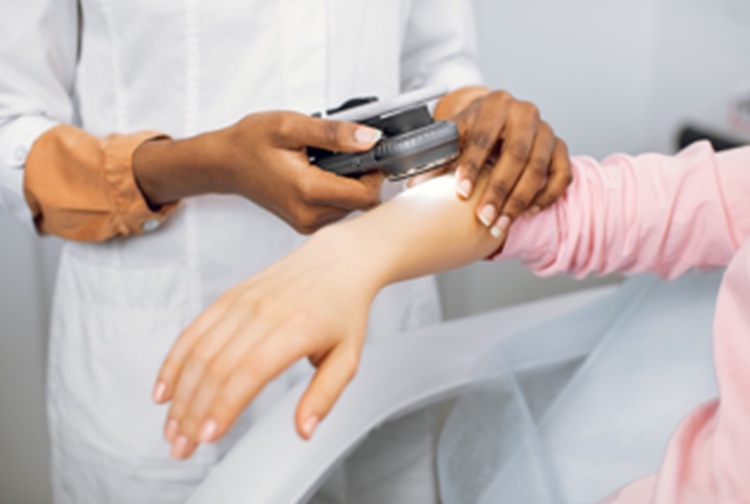
Melanoma 101: Tips for screening and preventing skin cancer
While it’s one of the most serious types of skin cancer, melanoma is highly treatable and curable when detected early.
May 18, 2023 VCU Massey Cancer Center providers recommend checking your skin thoroughly once a month for any changes. (iStock)
VCU Massey Cancer Center providers recommend checking your skin thoroughly once a month for any changes. (iStock)
By Annie Harris
With summer around the corner, there’s no better time to learn how to protect your body’s largest organ. We spoke with Kimberly Salkey, M.D., dermatologist at VCU Massey Cancer Center, to get the lowdown on skin cancer risk, screening and prevention – from top to bottom.
Sunscreen is for everyone.
Some people think, “If I don’t get sunburned then I don’t need to use sunscreen.” But it turns out that everybody, regardless of skin tone, race or ethnicity, should be using sunscreen. Even on a cloudy day, using sunscreen is important because ultraviolet (UV) rays penetrate the clouds.
In addition to cancer prevention, sunscreen also blocks UV rays that lead to signs of aging like wrinkling and discoloration. People with darker skin tones can suffer more from uneven skin tone or discoloration from sun exposure.
People with darker skin tones can get skin cancers in areas not exposed to sun.
The most common form of melanoma in Black patients is called acral lentiginous melanoma, which appears as a discoloration on the palms of the hands, the soles of the feet and under fingernails. People may do skin checks but could be missing important places where they can easily screen themselves.
Self-examination is as easy as the ABCs.
Look at all of your skin once a month. Use a hand mirror to look on your back, look on the bottoms of your feet, between your toes, look at your fingernails.
If you notice one of these characteristics in a mole, you should have it checked by a dermatologist because it may be an early sign of skin cancer:
- A is for Asymmetry. One half doesn’t match the other.
- B is for Border. Uneven, scalloped or notched edges.
- C is for Color. Multiple colors, changes in color or uneven color.
- D is for Diameter. The size of a pencil eraser (1/4 inch in diameter) or larger.
- E is for Evolving. Changes in size, shape, color or height, or new symptoms like bleeding, itching or a sore that won’t heal.
If all else fails, look for the ugly duckling – something that just looks different than all your other spots.
There aren’t hard and fast guidelines about skin cancer screening, unlike for other types of cancer.
In general, if you have a personal or family history of skin cancer, you should get a baseline skin check. For people without that history, other considerations that indicate the need for a skin check include:
- More than 50 moles
- A lot of large moles
- A history of bad sunburns, especially those that cause blisters
- A history of indoor tanning
Clothing may not be as protective as you think.
Unless fabric has a UPF rating of 30 or higher, it isn’t providing you protection from the sun. Use a layering strategy, especially when you’re getting children ready for a day in the sun: Get as much sunscreen on as you can, then put the rash guard on, then put on a hat and sunglasses.
Think about your incremental exposures.
Even if you work a 9-to-5 desk job, you may have more sun exposure than you think. A 30-minute commute twice a day is enough to get some sun exposure. While regular window glass blocks mostly UVB light, UVA light can still penetrate, and both types are associated with skin cancer development. Other daily tasks, such as going to check the mailbox or walking the dog, can add up too.
Sun protection and self-exams are the most important tactics for skin cancer prevention. Though melanoma is one of the most serious types of skin cancer, it’s highly treatable and curable when it’s detected early.



